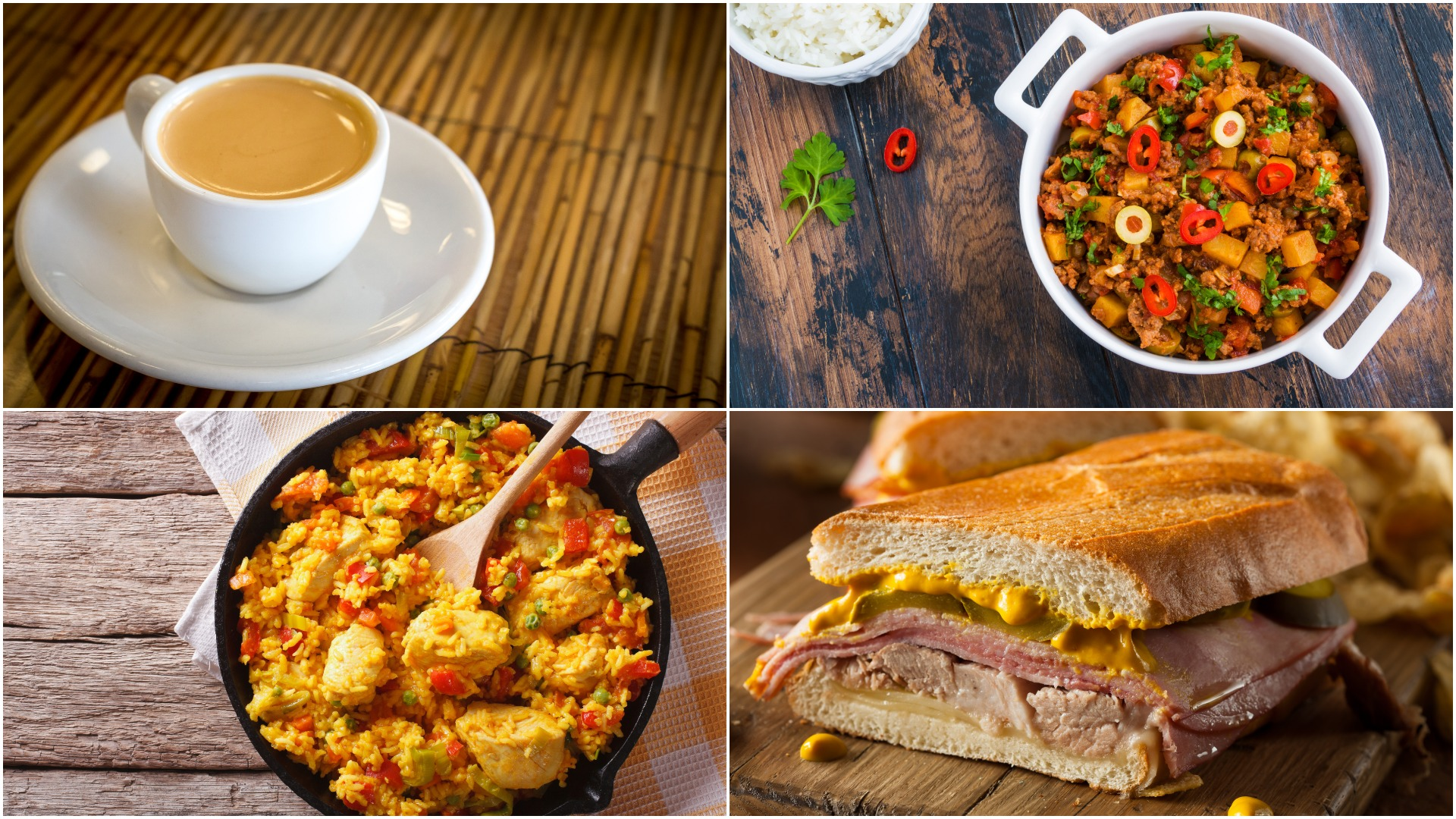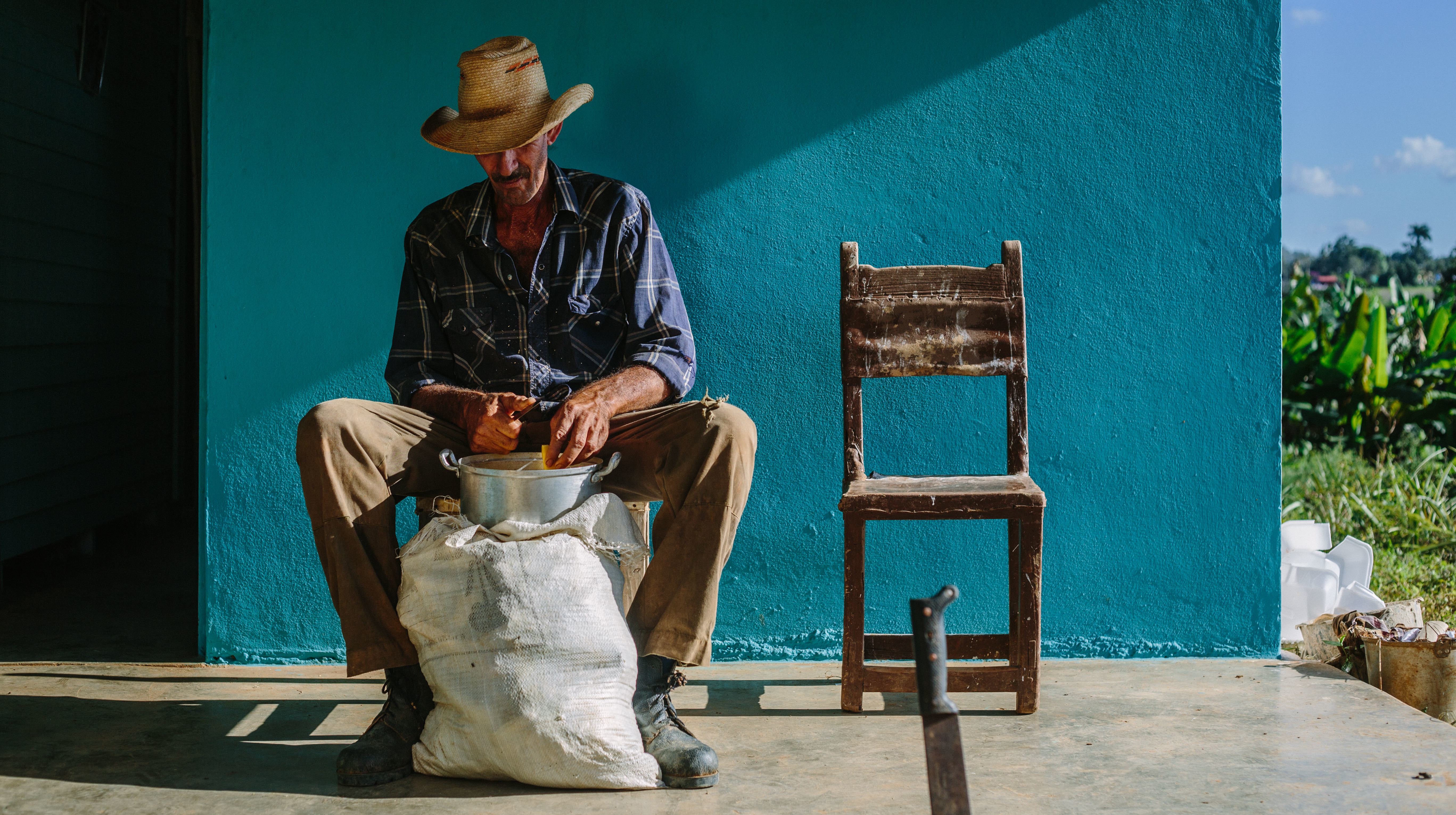A 60-Second Intro To Cuban Food
We may receive a commission on purchases made from links.
Cuban food has for decades been a part of the culinary landscape in places like Miami, New York City, and Los Angeles. But President Obama's 2014 announcement that the U.S. would move toward normalized relations with Cuba led to an increased American interest in tourism to the island nation. Then this year saw the release of Cuba: The Cookbook, a massive 432-page tome from Phaidon, that's introducing Americans to the country's flavorful, diverse culinary landscape. If there's ever been a time to dig into what Cuban food is—beyond the Cubano sandwich, people—it's now.
Cuban food, but where?
"When we talk about Cuban food, it's not the same Cuban food in Cuba as out of Cuba. It's two different cuisines," Asori Soto, the Cuban-born, New York City-based filmmaker behind the new documentary Cuban Food Stories. "For example, the Cubano sandwich is perhaps the most popular Cuban dish, but it's not from Cuba. It was made by Cubans living in Tampa."
Because Americans living in the United States were essentially unable to travel freely between here and their home country after the 1962 embargo, Cuban food in America developed its own identity separate from but related to the island. In Cuba itself, diplomatic and trade blockades wreaked economic havoc and led to food shortages; Cuba's foreign minister told the United Nations in 2013 the U.S. blockade amounted to more than a trillion U.S. dollars in losses over half a century. European tourists still visited the island, mainly its capital Havana, but Americans did not.
Ana Sofia Pelaez, the Miami-born, New York City-raised food writer and author of The Cuban Table, generalizes it thusly: "Cuba was concerned with a food shortage; Havana was concerned with its tourism market; and Miami was concerned with preserving tradition."
There is more interaction between greater Cuba, Havana, and the U.S. since 2014, but what comes to represent "Cuban food" in each still varies greatly.
Variation within Cuba
While experts tell me food within Cuba isn't as regional as Mexico or Italy, it is still a nation of more than 11 million people whose differing ethnicities, geographies, and socioeconomic classes influence food traditions across the island.
"We're talking a nation that is big and that has had a lot of communication problems with the world and also within the country, not having internet, not having transportation," Soto tells me. "All this has shaped Cuban food."
The city of Baracoa is perhaps the an extreme example of this; located on Cuba's northern tip, it's also separated from the rest of the island by a mountain range. Its cuisine developed as self-sustaining and authentic, even while other areas of the island were influenced by immigration and modernization.
You'll find Spanish influence (pork, bean soups, European spices) since the time of its colonial presence in Cuba, and French-inflected dishes dating from the Haitian Revolution of 1791. Chinese indentured servants were brought to the island in the mid-19th century, and it's believed they are responsible for the popularity of rice in Cuban cuisine.
Cuban anthropologist Fernando Ortiz, quoted in the introduction to Cuba: The Cookbook, compares Cuba itself to an ajiaco, a stew of meat and vegetables and aji peppers, made up of the flavors and influences of indigenous and foreign people.
Perceptions of Cuban food
Despite its richness and variation, Cuban food on the island hasn't always commanded the world's respect.
"The big challenge in making our documentary is just like, everywhere that you go, people will tell you 'Why are you doing a food documentary in Cuba when there's no food in Cuba?'" Soto tells me. "We want to change that perspective and say that the absence of food is also a story about food."
Soto explains to me that problems with infrastructure, economics, diplomacy, and international trade have throughout the decades made it difficult for average Cubans to access food and ingredients.
Restaurants also struggle because of an uneven supply chain; while a restaurant might have garlic one week, the next week it may be unavailable. This means the chefs must either change their recipes to include less of it, or modify their dishes altogether.
"On a positive note, much of the food is organic because it comes from small producers or people in the countryside growing their own food. The upside is it's very organic but it is a very tough supply chain," he says. "And it still hasn't changed. There are problems in transportation; if we don't have gas for trucks, how are you going to transport food fresh from the farms? Those and many other troubles that affect the country, they cannot be solved from day to night."
As American tourism increases and more attention is paid to the island's restaurants, Soto says now is a critical crossroads for restaurant traditions within Cuba.
"We need to be aware of what is our culinary heritage and we have to be proud of it," he says. "If we are not proud of it, we will lose our recipes and just create a type of cuisine that is for tourists."
Staple Cuban dishes
The backbone of almost all Cuban cooking is sofrito—the mirepoix-like base of garlic, onion, bell pepper, and spices—which is also a staple of Puerto Rican and Portuguese cuisine. It's used as a component in stews and braised meat dishes that might include chicken, pork, or beef. Pork became a huge part of Cuban cuisine after the Spanish introduced pigs to the island; along with chicken, the two meats are the most-consumed proteins on the island. Beef can sometimes be in short supply, but pigs and chickens are commonly raised in the countryside.
All meats are often marinated with garlic, salt, butter, and orange or lime juice; they're also often braised for long periods of time to create tender, juicy stews. This is one reason, Pelaez tells me, that home-cooked Cuban meals are often considered more delicious than those prepared more quickly at restaurants: "At home, you have this long, slow cooking process, maybe even over the course of the whole day, and then it all comes together in a minute when people sit down."
Ropa vieja, a marinated beef stew, is Pelaez's go-to dish, followed closely by braised oxtail.
"You're going to get messy when you're trying to get all the oxtail off the bone. It's something you'd have with family because you're going to end up with sauce all over your face," she says. "When I think of the soul of Cuban cooking, that's the one I'd go to."
She also mentions arroz con pollo, a layered dish of rice, chicken, and whatever else the cook feels like adding, as a staple of Cuban home-cooking. The braised chicken and rice form a canvas upon which a cook can add spices, vegetables, broth, etc. to make it their own.
No matter what protein forms the star of the dish, though, you can bet it's going to be served with black beans and rice, either together or separately.
"I never get tired of them. If you go to a restaurant and there's 10 items on the menu, eight come with a bowl of rice and black beans," Pelaez says. "With black beans, though, it's about how you cook them and how you give them time. Every pot is so unique. There are so many ways of having a different experienc with it."
And then, of course, you'll end your meal with coffee. You can read a whole treatise on Cuban coffee here, but suffice to say, it functions as much more of a social lubricant than a regular American cup.
"You go to a ventanita, which are these windows on restaurants or cafes, and I don't know if it's the coffee or the people drinking it, but everything becomes accelerated," Pelaez explains. "It becomes this public square—so many people who grow up in Cuba have this experience of coffee as the way we socialize."
The future
The recent history of Cuba's cuisine is a mix of past and present challenges, of heritage and innovation, of tensions between new and old. The changes in relations between Cuba and America over the past few years will only serve to further accent those boundaries, propelling some Cuban food into new waters while potentially helping to preserve other traditions.
Either way, its cuisine is enjoying a more global audience than ever before, both on the island and off.
"Speaking from the perspecttive of being in Miami and interviewing young Cuban chefs, there's a real hunger to experiment," Pelaez says. "They're coming from the Cuban culinary cannon but I see them wanting to apply techniques in a way that isn't necessarily fusion in the way we think of it, but in a way of pushing boundaries and pushing the envelope a bit. It happened for everyone else; it's time we give ourselves that space."
For Asori Soto, his documentary project could not come at a more crucial time. As he sees it, Cuban food needs to tell its story not just to the world, but to the sometimes disconnected areas of the island itself.
"We need to educate ourselves of what is the food that people eat in Cuba. People in Havana don't always know what people in Baracoa eat—that's because of the economic situation, transportation, other things," he says. "Unless we embrace our own food, we cannot modernize it, and make it better. For the film, we had to look for months to find our stories. But it's something that is worth it; we need to find those stories. Other Cubans need to hear these stories."

